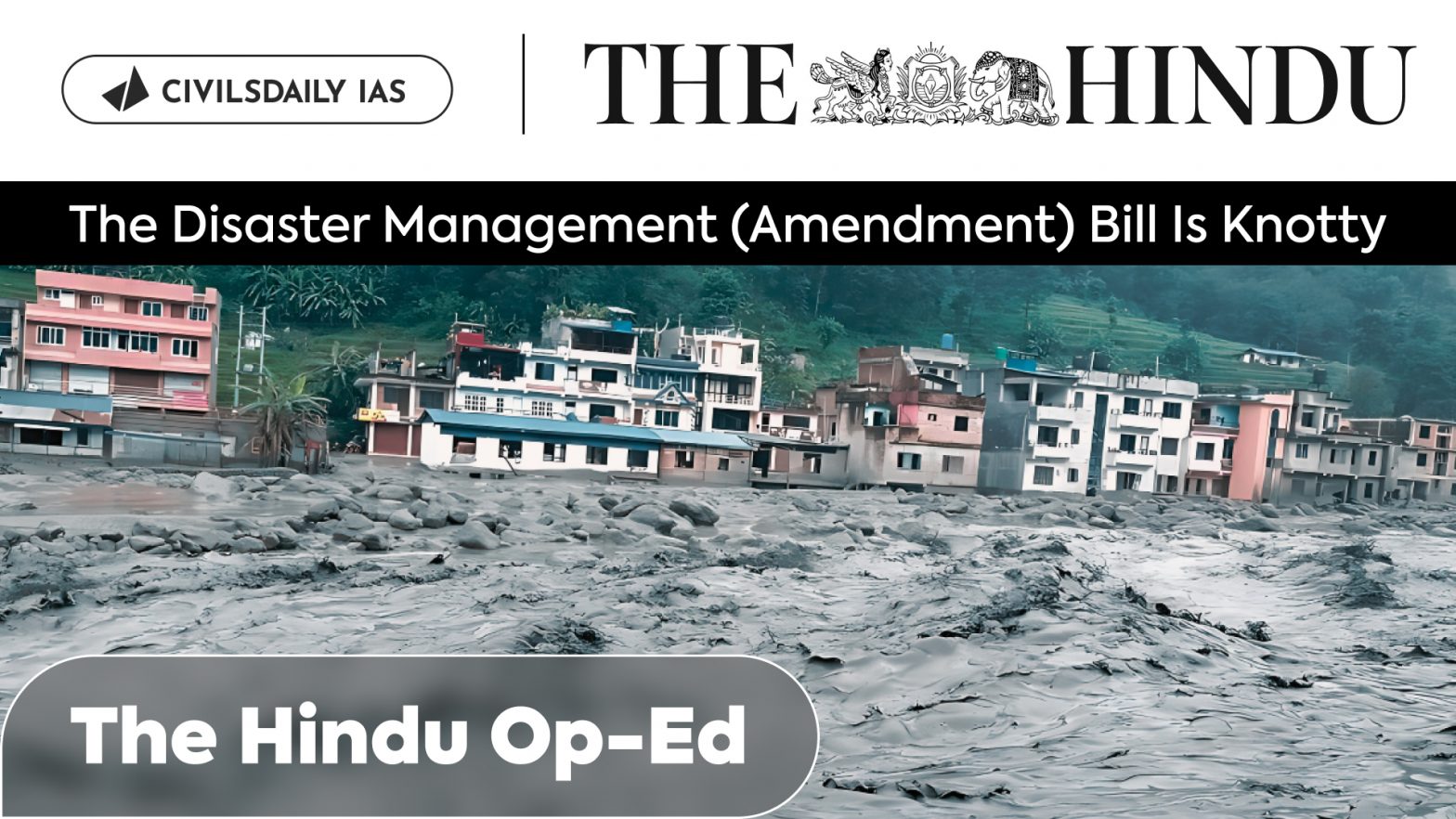| PYQ Relevance: Q Discuss the recent measures initiated in disaster management by the Government of India departing from the earlier reactive approach. (UPSC IAS/2020) Q Describe various measures taken in India for Disaster Risk Reduction (DRR) before and after signing ‘Sendai Framework for DRR (2015-2030)’. How is this framework different from ‘Hyogo Framework for Action, 2005’? (UPSC IAS/2018) Q How important are vulnerability and risk assessment for pre-disaster management? As an administrator, what are key areas that you would focus on in a Disaster Management System? (UPSC IAS/2013) Q Disaster preparedness is the first step in any disaster management process. Explain how hazard zonation mapping will help disaster mitigation in the case of landslides. (UPSC IAS/2019) |
Mentor comment: On August 1, 2024, the Indian government introduced the Disaster Management (Amendment) Bill in the Lok Sabha, aiming to amend the Disaster Management Act of 2005. The Bill centralized disaster management further by granting statutory status to existing bodies like the National Crisis Management Committee and establishing an Urban Disaster Management Authority for major cities. While it seeks to empower the National and State Disaster Management Authorities to prepare disaster plans and create a national disaster database, critics argue it complicates the disaster response framework and could delay actions during emergencies, undermining the Act’s original intent.
_
Let’s learn!
Why in the News?
The Disaster Management (Amendment) Bill 2024 introduced recently complicates the disaster response framework and could delay actions during emergencies, undermining the Act’s original intent
What are the key highlights/features of this Bill?
- Statutory Recognition for Existing Bodies: Grants statutory status to pre-existing organizations such as the National Crisis Management Committee (NCMC) and the High-Level Committee (HLC), enhancing their roles in managing major disasters.
- Regulatory Powers: Empowers the NDMA to make regulations under the Act with prior approval from the central government, allowing for greater flexibility in disaster management.
- Disaster Database: Mandates the creation of a disaster database at both national and state levels, which will include information on disaster assessments, fund allocations, expenditures, preparedness and mitigation plans, and risk registers.
- Empowerment of National and State Authorities: The Bill empowers the National Disaster Management Authority (NDMA) and State Disaster Management Authorities (SDMAs) to directly prepare disaster management plans, replacing the previous role of the National and State Executive Committees.
- It also establishes UDMAs (Urban Disaster Management Authorities) for state capitals and large cities with municipal corporations, excluding Delhi and Chandigarh.
- State Disaster Response Force (SDRF): Provides for the constitution of SDRFs by state governments, which will be responsible for disaster response at the state level. The Bill allows states to define the functions and terms of service for these forces.
- Focus on Disaster Risk Reduction (DRR): Expands the definition of disaster management to include disaster risk reduction, emphasizing proactive measures to reduce vulnerability and enhance preparedness.
- Penalties for Non-compliance: Introduces provisions allowing the central and state governments to direct individuals to take necessary actions or refrain from actions to mitigate disaster impacts, with penalties for non-compliance capped at ₹10,000.
Critics around the Disaster Management (Amendment) Bill, 2024:
- Centralization of Decision-Making: The Bill dilutes the NDRF’s purpose by removing specific uses for the fund, which has historically led to delays in aid distribution during severe disasters, as seen in the delayed response to Tamil Nadu’s needs compared to Karnataka’s.
- This centralization may hinder prompt action in urgent situations.
- Restricted Definition of ‘Disaster’: The Bill does not classify ‘heatwaves’ as a notified disaster, despite their increasing frequency and severity in India. This restrictive approach limits the scope for addressing emerging climate-induced challenges effectively.
Conclusion:
There is a need to re-visit the Centre’s efforts in addressing the issue of financial preparedness when it comes to the management of and response to disasters. The decision should avoid the single most event of the Wayanad Disaster and needs to have a broader view. After all, a blame game will only move away from realizing the true spirit of cooperative federalism.

